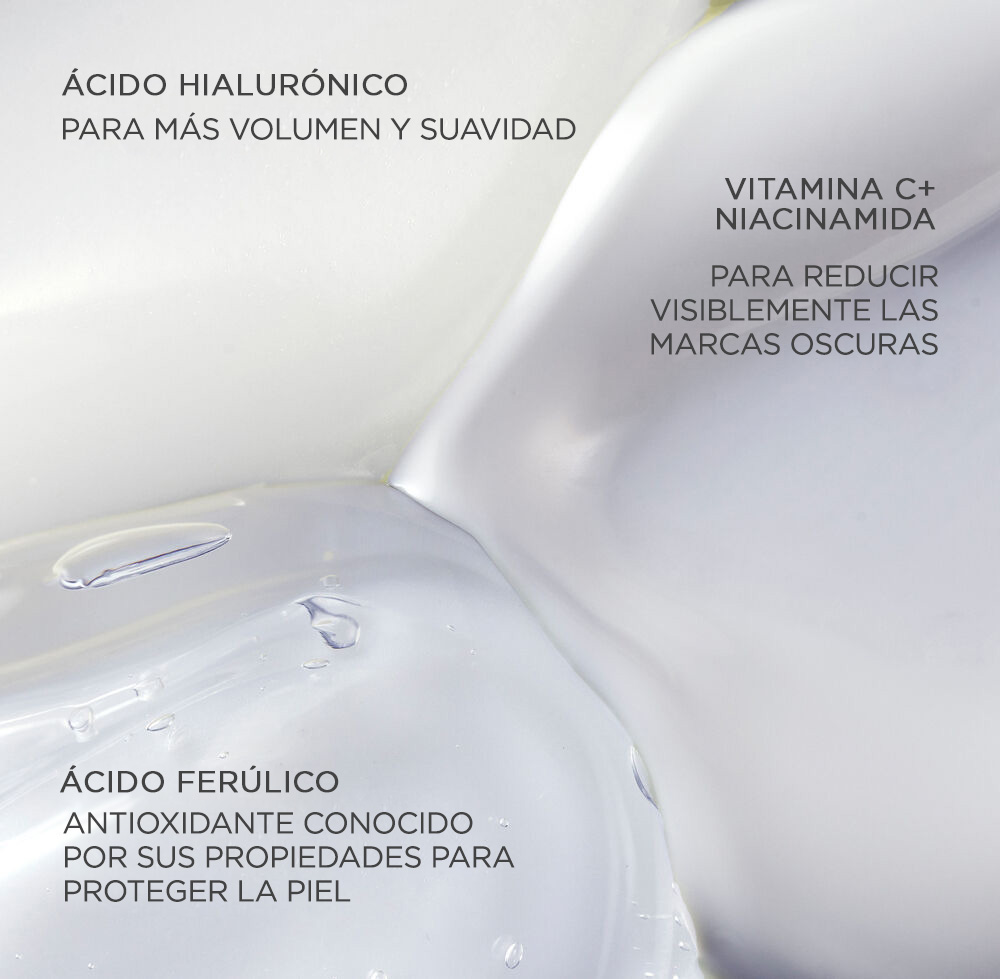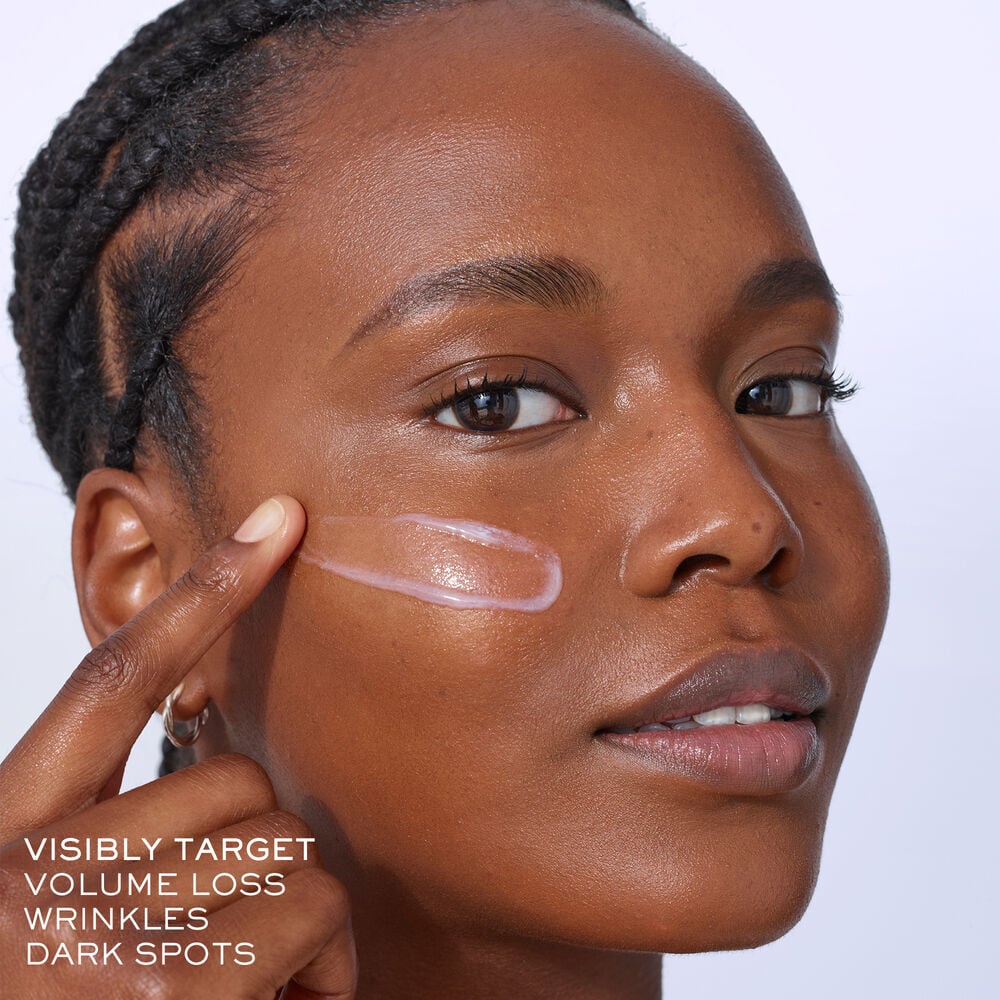Ácido ferúlico: qué es el ácido ferúlico y cómo usarlo
Artículo publicado: 28 Septiembre 2022
Descubra los beneficios del ácido ferúlico antioxidante para la piel, que ilumina visiblemente y combate los radicales libres y la contaminación.

Un antioxidante natural: el ácido ferúlico es un ingrediente derivado de plantas que se puede encontrar en muchos productos para el cuidado de la piel no es solo una conversación, de hecho, el ácido ferúlico tiene beneficios científicamente comprobados para la apariencia de la piel.1 Dicho esto, ¿es este realmente otro ingrediente que debería incorporar en mi rutina de cuidado de la piel? Creemos que definitivamente vale la pena investigar el ácido ferúlico para la piel como su nuevo ingrediente para el cuidado de la piel.
Cuáles son los beneficios del ácido ferúlico para la piel
El ácido ferúlico es un ingrediente que puede encontrar en varios productos diferentes para el cuidado de la piel. Sus ricas propiedades antioxidantes lo convierten en un ingrediente deseable para el cuidado de la piel, pero más allá de ser simplemente un antioxidante, es posible que se pregunte cuáles son algunos de los beneficios del ácido ferúlico para la piel.
Cuando se utiliza en fórmulas para el cuidado de la piel, el ácido ferúlico a menudo se promociona por sus propiedades fotoenvejecidas. Entre sus beneficios, se ha demostrado que el ingrediente ayuda a neutralizar y combatir los radicales libres (como la contaminación o la radiación UV), que a menudo contribuyen a los signos visibles del envejecimiento de la piel, como las arrugas y las líneas de expresión.2 Un actor en productos antienvejecimiento, el ácido ferúlico también ha demostrado ayudar a mejorar el aspecto de las líneas de expresión y las arrugas.34
Además, también se ha demostrado que el ácido ferúlico tiene algunos beneficios iluminadores.5
Productos Lancôme con ácido ferúlico
El ácido ferúlico es un ingrediente que creemos que vale la pena incluir en tu rutina de cuidado de la piel y está presente en algunas de nuestras fórmulas, como el suero triple Rénergie H.C.F. En este suero, el ácido ferúlico se combina con ácido hialurónico y vitamina C+niacinamida. Este suero se envasa para brindar beneficios antienvejecimiento óptimos en una sola fórmula.
El ácido ferúlico como ingrediente proporciona poderosos beneficios antioxidantes en esta fórmula para ayudar a neutralizar el daño perjudicial de los radicales libres y mejorar la barrera de humedad natural de la piel contra el estrés oxidativo que puede acelerar los signos visibles del envejecimiento de la piel.
Con nuestro exclusivo empaque de triple cámara, el ácido ferúlico se aloja en su propia cámara sin agua, lo que ayuda a estabilizar este ingrediente potente pero altamente sensible y a evitar que su resistencia se degrade con el tiempo.
Compatibilidad de ingredientes con ácido ferúlico
Es posible que el ácido ferúlico no se exagere tanto como el famoso ácido hialurónico o ácido salicílico, pero sigue siendo un ingrediente que se encuentra en los productos para el cuidado de la piel, por lo que es posible que te preguntes cómo juega con otros ingredientes.
ácido ferúlico y ácido hialurónico
El ácido hialurónico puede ser el “ácido” más ampliamente conocido que existe en los productos para el cuidado de la piel. Reconocido por sus propiedades de hidratación y consistencia ligera, el ácido hialurónico es un ingrediente fantástico para humectar la piel.6 Puedes encontrar tanto ácido hialurónico como ácido ferúlico en nuestro triple suero Rénergie H.C.F, que utiliza diferentes cámaras para garantizar la estabilidad de los ingredientes y los efectos más potentes de cada ingrediente.
Vitamina E, vitamina C y ácido ferúlico
La vitamina C es conocida por sus beneficios antioxidantes en la piel y por cómo puede ayudar a iluminar visiblemente la apariencia de la piel y mejorar su textura7. Se ha demostrado en algunos estudios que la combinación de ácido ferúlico y vitamina C y/o vitamina E puede ayudar a mejorar la estabilidad de los ingredientes. En un caso, se demostró que el uso de una combinación de vitamina C, E y ácido ferúlico puede ayudar a brindar protección contra el estrés oxidativo en la piel y podría ayudar a proteger contra el fotoenvejecimiento visible.8
niacinamida y ácido ferúlico
La niacinamida es un ingrediente que ha demostrado ayudar a estimular la hidratación y humectar la piel9. También se ha demostrado que tiene beneficios para iluminar visiblemente la apariencia de la piel10. Algunos estudios han demostrado que la combinación de ácido ferúlico con otros activos con propiedades iluminadoras como la niacinamida es posible, por lo que la niacinamida y el ácido ferúlico son una combinación que vale la pena explorar11. Nuestro suero triple Rénergie H.C.F contiene ácido ferúlico y una combinación llamada C+niacinamida (también conocida como vitamina C y niacinamida)
1 https://www.nature.com/articles/s41598-020-68732-6
2 https://www.ncbi.nlm.nih.gov/pmc/articles/PMC3299230/
3 https://pubmed.ncbi.nlm.nih.gov/28884442/
4 https://www.karger.com/Article/Fulltext/491755
5 https://www.karger.com/Article/Fulltext/491755
6 https://www.ncbi.nlm.nih.gov/pmc/articles/PMC3970829/
7 https://jamanetwork.com/journals/jamaotolaryngology/fullarticle/509859
8 https://pubmed.ncbi.nlm.nih.gov/16185284/ 9 https://www.ncbi.nlm.nih.gov/pmc/articles/PMC2921764/
10 https://pubmed.ncbi.nlm.nih.gov/18492135/
11 https://www.karger.com/Article/Fulltext/491755#ref33





